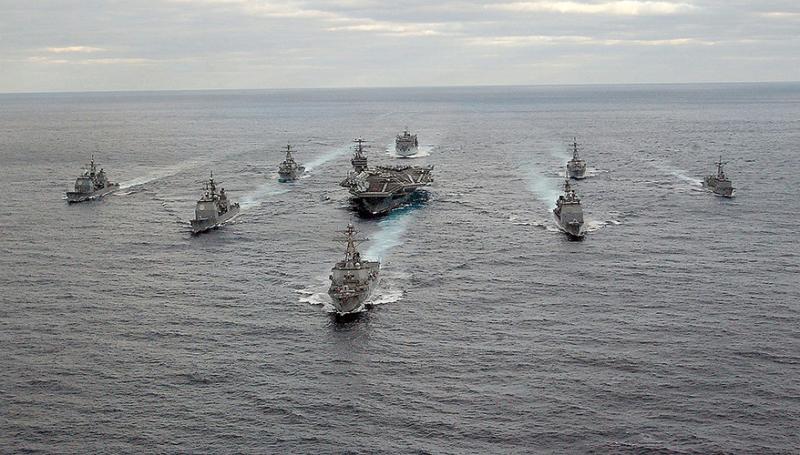The Shrinking U.S. Navy - WSJ
By: The Editorial Board (WSJ)



President Biden says he'll boost defense spending next year because the world is more dangerous. But the budget details don't match his rhetoric, and Exhibit A is the bleak outlook for the Navy. The bill for decades of complacency and neglect is coming due at a dangerous moment, as China ramps up its fleet.
The Navy's 2023 budget released last week asks to purchase nine ships while retiring 24, and you don't need an advanced math degree to understand that will shrink the 298-ship fleet. The Navy's estimates show the fleet contracting to 280 ships in 2027. A congressional aide tells us the Navy is essentially double-counting a ship Congress already authorized, so at eight new ships the Navy adds one for every three it would scrap.
Meanwhile, the Navy’s top officer has said that a Navy capable of defeating peer adversaries like China needs about 350 ships and another 150 unmanned or lightly manned vessels, for a total of 500. A reasonable observer may wonder how the Navy plans to grow by getting smaller.
The truth is the Navy finds itself without the resources to expand its fleet or sustain its current ships, and some of its inventory is ill-suited for the next fight. The Navy wants to retire nine littoral combat ships, arguably the service’s biggest acquisition failure of all time in a crowded field. As usual with these Pentagon disasters, the admirals and civilians responsible have long since left the building.
The littoral ship designed to operate in shallow waters has struggled to carry out any useful mission. One marked for retirement was commissioned less than two years ago . The USS Detroit and USS Little Rock, slated for early retirement, “both experienced major propulsion issues to their engines in 2020, which rendered both ships inoperable,” the Government Accountability Office reported in February . “The Navy terminated both deployments early to perform repairs on these ships.”
It is tempting to stop throwing money down this hole, but the Navy’s replacement, a new frigate, is still in development and years away from entering the fleet. Meanwhile, the Navy wants to retire five cruisers that each pack more than 120 missile tubes—serious offensive firepower—arguing that the 30-plus-year-old ships are so rundown they’re unsafe.
As the U.S. debates its least-bad options for managed decline, China is laying hulls. The chart nearby illustrates how China’s fleet will soon dwarf the U.S. Navy. No matter, some say, since U.S. ships are more capable. But quantity is underrated in preventing wars and surviving them if they start. The Pacific isn’t the world’s only water to police. The U.S. Navy has been spending less time in the Black Sea in recent years, according to one analysis , and Vladimir Putin may have priced that into his Ukraine invasion calculation.
Congress last year intervened to buy more ships, and it will need to come to the rescue again. Promising ideas for making the most out of ships in the water: Outfitting the littoral combat ships with the long-range Naval Strike Missile, or tying up the poor old cruisers to do air defense over Guam .
But the Navy’s proposal to retire two dozen ships to save $3.6 billion over five years—a tiny fraction of the service’s budget, as Democratic Rep. Elaine Luria has pointed out —suggests the institution lacks a strategy as well as money. Americans have grown accustomed to peaceful seas over the past 70 years, but that luxury will fade if the U.S. Navy does.

Who is online
36 visitors

